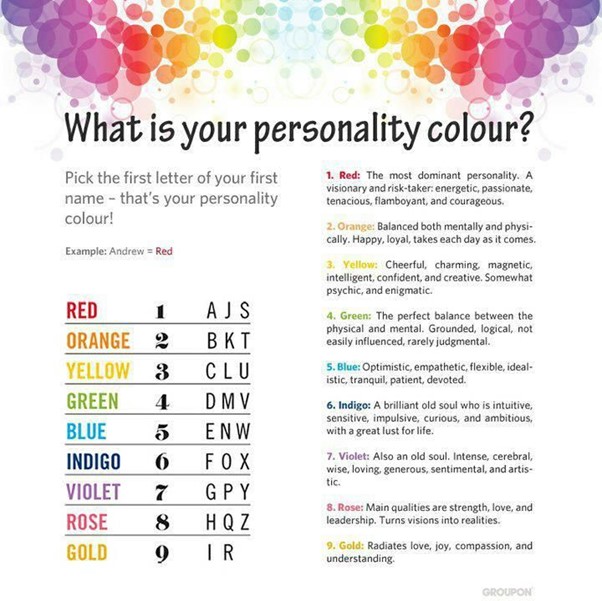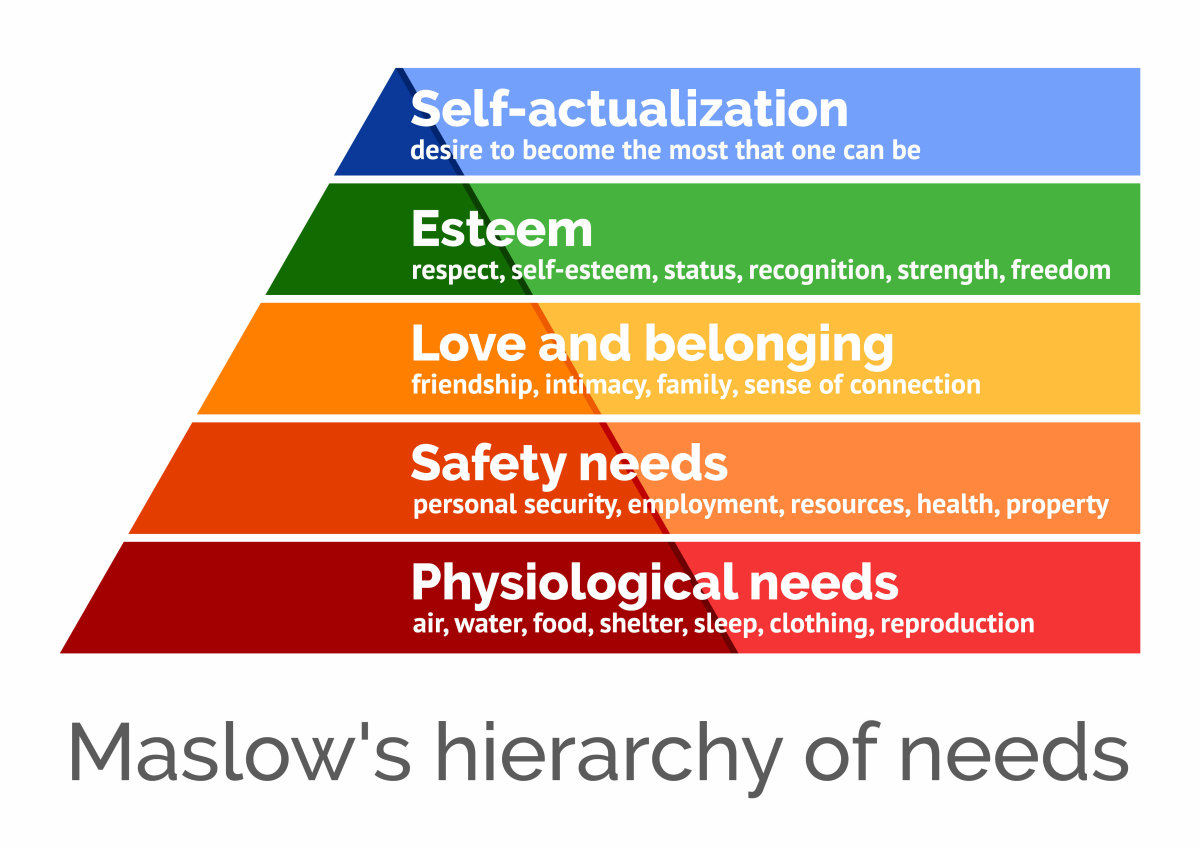Psychology
Your Psychological Development and Behaviour
MINDS ON

Did your colour accurately describe your personality? Likely not. We can probably all agree that this assessment, while commonly shared through social media sites, doesn’t really pass the CRAAP test! Does it actually measure what it is supposed to (e.g., your personality?) and, does everyone with a name that starts with the same letter have the same personality? No. This measure is definitely not valid or reliable. However, it does illustrate one important point: people are curious about how they act, think, and behave.
Now, take a look at this cartoon:

Which one do you identify with? Introverts, as you can likely tell, regroup and recharge their inner batteries, so to speak, by being alone. Introverts tend to be quiet and reflective; they may find it stressful to be around others, especially large groups. On the other hand, extroverts charge their inner batteries around others! They see being with other people as exciting, and they are likely much more outgoing than their introverted peers. This is a good example of how your temperament(definition:the natural, innate aspects of an individual's personality) can really influence how you act and think in different situations.
 Temperaments
Temperaments
- Choose one of these question starters and use it to help you pose a question about these temperaments - introversion and extroversion.
- Why...?
- How would it be different if...?
- What are the reasons...?
- Suppose that...?
- What if...?
- What if we knew...?
- What is the purpose of...?
- What would change if...?
- Choose a question that seems interesting to you.
- Respond to that question in one or two sentences.
Save your questions and answers to your Portfolio.
Aside from extroversion or introversion, what other factors influence your behaviour and the way you develop psychologically? That is what we will explore in this activity.
ACTION
Now that you have learned about the foundational concepts in all of the social sciences, we will start looking closely at the content itself - the specific theories and perspectives that are unique or special to each discipline.
Remember to advocate for yourself. If you’re not sure that you understand what you are learning, what can you do? Don’t hesitate to ask for feedback from a peer or from your teacher. Be sure to use your metacognitive thinking questions (in Unit 1, Activity 1) along the way, as well.
In psychology, there is a concept called the “self-reference effect.” It is the idea that people will remember information better if the information relates directly to themselves - if the information is meaningful. This makes sense, right? Learning about topics that aren’t interesting or aren’t practical is quite challenging. As you’ve read before, the theories and perspectives that you will learn about in this course are relevant! As you read about these different factors that are known to influence people’s individual psychology, try to apply the self-reference effect. Ask yourself: ‘Can this theory or perspective explain my own behaviour or the behaviour of someone I know?’ Using the self-reference effect will help you to reflect on your experience and enhance your learning.
It is important to note that the following major (e.g., essential) question will guide this activity: “How do different psychological perspectives explain your individual behaviour, personality, thinking, or mental processes?” To be able to answer that question, you will need to reflect, and ask yourself, ‘Who am I now?’ You will have an opportunity to answer this question throughout this activity.
Let’s start by learning about your personality, and the factors that shape (and have shaped) you.
Personality
The term personality describes the way to think, feel, and act. Many factors have contributed to your personality. For example, being an introvert or an extrovert – concepts that you learned about in the Minds On section of this activity - influence your personality. Sometimes different factors may influence your personality for a short period of time (e.g., the people you are with or the expected behaviours, or norms, in your social setting) but for the most part, your personality is very consistent – right from the time you were a small child! To test this claim, find people you have known for a very long time (e.g., mom, dad, guardian, uncle, or aunt), and ask them if your personality is the same now as it was when you were young. Don’t be surprised if they say it is!
Why would it be important to study personality? Can you think of any reasons?
To try and help you understand why studying the concept of personality is so important to psychologists, let’s try a self-referencing approach. What job do you think you might do after you graduate from high school? Did you know that some personality types are known to be a ‘good-fit’ for specific jobs? Take a minute to read this infographic.
If you want to view any links in this pdf, right click and select "Open Link in New Tab" to avoid leaving this page. (View the original article.)
Understanding your personality can help you choose the right job – and help you understand and deal with other people, such as co-workers, for example.
Appreciating different personality types can help you in the future, but it can also help you develop your collaboration skills now. For example, the next time you have the opportunity to work with others on a school-related task, who would you choose? Would it be best to work with people who have similar personalities as you, or different? What are the pros and cons of each? The next time you are given the chance to choose group members, you might want to stop and think about these questions before you decide with whom you want to work.
Different types of psychologists think about how we become who we are and how our personality develops from different perspectives or lenses. Reach back and think about the current perspectives that are used by psychologists to study human behaviour. You learned about these perspectives in the first activity of this unit (U2A1). Click on this greek symbol to see the current perspectives.
We will look at psychological development and personality from both the psychoanalytic and humanistic perspectives.
The Psychoanalytic Perspective
Watch or listen to this short introduction to the Psychoanalytic Perspective. It will help you understand different theories that explain your personality:
This video introduced a key idea that psychoanalytic theorists believe: that our past experiences have a big impact on who we are and how we behave (even though we may not realize it!). Think about your own past experiences: have they been good or bad? You don’t need to share your thoughts with anyone, but having an idea of your past will help you make connections with the main ideas in the psychoanalytic perspective.
This is a Rorschach test. Take a look. What do you see?

According to the psychoanalytic perspective, our minds are made up of different parts. These different parts influence our personality – how we think, feel, and act. One of the different parts of our mind is called the unconscious, and it is a part that we don’t even realize exists! According to today’s psychoanalytic theorists(definition:people who study behaviour using a specific lens) it is the part of the brain that holds and processes a lot of information about which we are unaware. Another important point about the unconscious part of our mind is that a lot of our memories from our past experiences and childhood are stored there.
Thinking about your mind as being made-up of different parts may be a difficult thing to do. Looking at the work of a specific psychoanalytic theorist may make the concept clearer. Let’s examine theories that were presented by the founder of the psychoanalytic perspective, Sigmund Freud.

Here are three facts about icebergs.
- The part of the iceberg you can see and are aware of is the part above the water line.
- The biggest part – some might say its most significant – is under the water, which means you likely don’t see or think about it.
- Together the parts make up a very big and important structure.
Why are we talking about icebergs? An image of an iceberg is often used (as an analogy) to represent Freud’s theory of the structure of the mind because it has similar characteristics.
Sigmund Freud believed that the mind was made up of three different parts: the ego, the superego, and the id. According to Freud:
The ego is like the top of the iceberg: it is the part of the mind that we are aware of – the part that we think about (when we think about our thinking!) Our ego is the part of our mind where we make decisions. The ego has to deal with the consequences of our decisions, so it follows the reality principle.
The superego is part of the iceberg that is near the water line – some is exposed above and some is hidden below the water. This is called the preconscious and it is able to communicate with your ego. The superego is where we store our moral compass. It is the part that helps us with making the right or ideal choices and planning future goals. So, it follows the morality principle. Remember The Marshmallow Test? The superego helps you with delaying gratification!
The id is the part of the iceberg that is totally underwater, or submerged. It is called the unconscious area of the mind. It is the part of the mind that wants to be satisfied immediately (e.g., sexual drives, aggressive tendencies). You’ll notice it is the biggest part, which explains why the desire for immediate gratification is so hard to resist. Remember how many kids couldn’t wait to eat the marshmallows? Freud thought that the id is where we keep a lot of our thoughts, feelings, wishes, and memories – good and bad. So, the id follows the pleasure principle.
Freud believed that the ego’s job was to listen to (or communicate with) the other two parts of the mind, and then make decisions. That’s why it’s said to follow the reality principle – it has to deal with the consequences of the choice it makes. The ego has to consider what the superego wants (which is likely to do the right thing), and what the id wants (to have wishes immediately fulfilled).
Let’s consider a scenario:
It’s Thursday night and you have some homework due tomorrow. You get a phone call from a friend to do something you love (watch a movie, head out to a party, go biking, etc.). Joining your friends means that you will not get your work done. Do you go, or stay home and finish your work?
Id_Ego_Superego
The decision you would make in this scenario – how you feel about the situation, how you think about the pros and cons, and what you decide to do or how you act – represents your personality.
Some people’s ego may always side with their superego and some people’s egos may only ever listen to their id. Ultimately your personality (how you think, feel, and act), according to Freud, is the interplay or dialogue between the parts of your mind.
Here is a video that describes the id, ego, and superego:
If you would like to check your understanding of the theory, or if you would like more information about the theory then take a few minutes to watch or listen to the video.
Freud’s Defense Mechanisms
Anxiety is a very important issue in our society – many people deal with it on a daily basis. Consider for a moment the job of the ego – imagine how hard is must be to be making all those decisions! Side with the superego and disappoint the id, or side with the id and disappoint the superego. This constant and resulting stress or tension because of this interplay between the different parts, according to Freud, is anxiety.
Freud proposed a theory which he called defense mechanisms to explain how the ego protects itself from tension and anxiety.
We all deal with stress and anxiety. So, as you learn about the different defense mechanisms use the self-reference effect – which mechanisms do you use to deal with anxiety? You don’t need to share your answer to this question, but knowing the answer will help you understand yourself (and others).
Would you like to learn more about (or clarify your understanding of) Freud’s Defense mechanisms?
Watch/listen to Freud’s Defense Mechanisms video.
The article, 20 Common Defense Mechanisms Used for Anxiety, will also help you understand the theory.
sorting_interactive
Thinking Critically about Freud’s Theories
Freud’s theories were based on his work studying, observing, and interviewing people that dealt with many (negative) issues. Many of his studies focused on women from middle-class Austria where he lived. Some people question whether this would allow him make successful behaviour predictions for everybody – in general.
Another point to remember about this theory is that the methods Freud used to collect research – observation and interviews – are descriptive. That is, they described behaviour after it occurred, rather than being able to explain what caused it in the first place (Remember correlation doesn’t mean causation!).
Other Psychoanalytic Theorists
Sigmund Freud was not the only psychoanalytic theorist. There are other psychoanalytic theorists that offer different and valuable explanations about human psychological development and behaviour.
 Psychoanalytic Theorists
Psychoanalytic Theorists
Study the work of one of these other psychoanalytic theorists - Carl Jung, Alfred Adler, or Karen Horney. This planning organizer uses a specific method called the Cornell Note-taking method to help you organize your notes as you conduct your research.
The Humanistic Perspective
The Humanistic Perspective in psychology is different from the psychoanalytic perspective because it focuses on healthy people’s potential or what they are capable of doing (instead of being negative and explaining what issues or problems they have).
A very important psychologist, named Abraham Maslow, helped to discover the humanistic perspective during the 1960s. He studied and observed many creative, healthy, happy people who had positive self-concepts (thought about themselves positively) and reached great potential in their lives. After he reflected on all of the research he had gathered, Maslow noticed similarities in how some people thought and acted (personality), and what motivated them. So, Maslow proposed a theory which he called a ‘Hierarchy of Needs.'
Maslow’s Hierarchy of Needs

The bottom of the pyramid provides a solid foundation for the structure - without it, the pyramid would not be stable. Maslow created his hierarchy of needs with the foundational level (or most important level) on the bottom - just like a pyramid. According to Maslow’s theory, how people think and act depends on the level of the hierarchy they are trying to fulfill (or achieve). An important point to know is that people can slide down levels, or jump up levels; it all depends on what is happening in their own lives, the society, and the world around them. The ultimate goal, according to Maslow, is to reach the highest level in the hierarchy - to become self-actualized, and reach full potential.
Now, let’s take a closer look at each level in Maslow’s Hierarchy of Needs.
Here's an interesting point to ponder. It has been argued that people who live in a ‘material world,’ or who are obsessed with material goods (e.g., having the best phone, a new car, the biggest house), may never become self-actualized because they are obsessed with trying to have their self-esteem needs met. What do you think? You don’t need to answer this question now, but it is something to think about. Having the newest gadgets and best clothes doesn’t always make people happy.
Thinking Critically About Maslow’s Hierarchy of Needs
Some people (e.g., other theorists) believe that Maslow’s Hierarchy of Needs is too vague and subjective and that it is biased towards the ideals and values that Maslow thought were important.
Other people believe that Maslow’s Hierarchy is not realistic because it assumes that people are innately (born) good - not evil. These people may think that if everyone is focused on becoming self-actualized, then what explains all the problems in the world - terrorism, overpopulation, global-warming, nuclear weapons, etc.
Another famous humanistic theorist that offered great contributions to explain development and behaviour was Carl Rogers.
 Carl Rogers
Carl Rogers
Find a resource that explains Carl Rogers’ Person-Centred Perspective. Use this planning organizer to help you organize your notes as you conduct your research.
Learning (Behaviourism)
Think about your average day. Do any of these things happen to you?
- You wake up to the music or buzz of an alarm clock.
- You grab your phone because you hear or feel it vibrate or beep.
- Your mouth starts watering when you smell coffee or your breakfast cooking in the morning.
- You go to your job so that you can earn a paycheck.
These are all examples of how your environment - the forces around you - can influence and change the way you think and behave. These are examples from the different, more scientific perspective, called behaviourism.
Studying how factors in our environment can change our psychological development is a concept or process called learning, or conditioning. Behaviourists (people who study behaviourism) tend to use the research method of experiments or experimentation, when they study behaviour.
There are two different types of conditioning processes - classical conditioning and operant conditioning. Let’s consider a general overview of these two types.
Classical conditioning occurs when we develop associations between something that sparks a response (the stimulus) and how we respond to it (the response). For example, consider the following questions.
- Does the thought of a specific food (stimulus) make you feel nauseous/sick (response) because you had a bad experience with it in the past?
- Does hearing a certain song (stimulus) remind you of an event/person (response) when you hear it?
- Does smelling a specific cologne or perfume (stimulus) make you think of someone (response) when you smell it?
These questions show the relationship between a stimulus (cause) and an involuntary/automatic response (effect) that has been learned because of your past experiences - in other words, through your environment.
Operant Conditioning explains how our behaviour voluntarily changes and becomes stronger in response to consequences or reinforcement. We often think about consequences as being bad - something we don’t want. However, they aren’t always negative. Consequences can be great sometimes, too. For example, getting a paycheck isn’t bad, is it? Or, collecting that free sub after the tenth stamp on your customer card.
As you can likely figure out from these two examples, operant conditioning explains how adding or removing a consequence or reinforcer (e.g., getting a paycheck, collecting stamps or points on loyalty cards, or stopping that frustrating beeping noise when you buckle-up in a vehicle) can make us voluntarily change or modify our behaviour.
The article What Is Operant Conditioning and How Does It Work? will help you learn more about Operant Conditioning.
The article What Is Classical Conditioning? will help you learn more about Classical Conditioning.
This video examines the differences between classical and operant conditioning.
 Ivan Pavlov and B.F. Skinner
Ivan Pavlov and B.F. Skinner
Find a resource that explains Ivan Pavlov’s (classical) conditioning experiment, and one that explains B.F. Skinner’s (operant) conditioning experiments. Use this planning organizer to help you organize your notes as you conduct your research.
CONSOLIDATION
 Psychological Perspectives
Psychological Perspectives
Throughout this activity, you have learned about theorists from three different perspectives: the psychoanalytic perspective, the humanistic perspective, and the behaviourist perspective.
Remember the guiding question for this activity: “How do different psychological perspectives explain your individual behaviour, personality, thinking, or mental processes?”
Take a few minutes to think about how you would answer this question. To be able to do that, you might think about the three different perspectives (using the self-reference effect!). Which of the perspectives did you think made the most sense? The least? Were they all valid in your mind or were some more valid than others?
Answer the following questions in your notes. You could consider using a creative format, such as a mindmap, images, words, etc. Save your document in your Portfolio because you will use your answers from this activity later in this unit.
- What is the name of a psychologist?
- What is the name of her/his theory?
- How does the theory describe or explain your behaviour?
- What image can you find that connects this theory to my own behaviour or experience?
- How does the image connect the theory to my development and personality?
